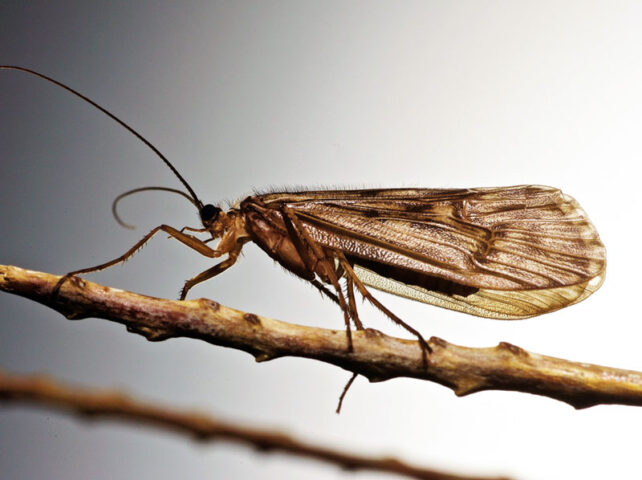By: Alyssa Winters, Farm Bill Biologist, Blue Water Conservation District
It’s that time of year when you’re enjoying an early morning at the farmer’s market or having a nice dinner along the river and, suddenly, you’re approached by a swarm of tiny, flying insects called caddisflies. Although a lot smaller than the well-known mayflies, and despite being completely harmless, a cloud of caddisflies might still bug you (pun intended) when you’re enjoying some fresh early summer air. However, don’t worry, they aren’t around long! Their interesting life cycle and important ecosystem services make up for the fact you’ll be respectfully swatting at them for the next few weeks.
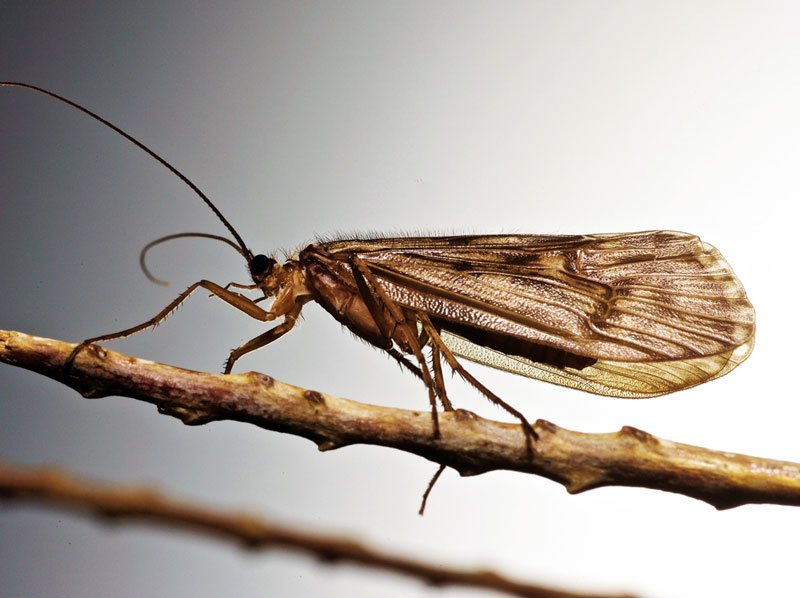
Caddisflies are insects classified under the Order Trichoptera; tricho- meaning “hair” and –ptera meaning “wing”. The adult stage has tiny, hairy wings that fold back across its body. Caddisflies look similar to moths, but caddisflies are smaller and only grow to about a half inch. However, one characteristic they do share with moths and butterflies is they experience a complete metamorphosis, meaning they have an egg, larva, pupa, and adult life stage.
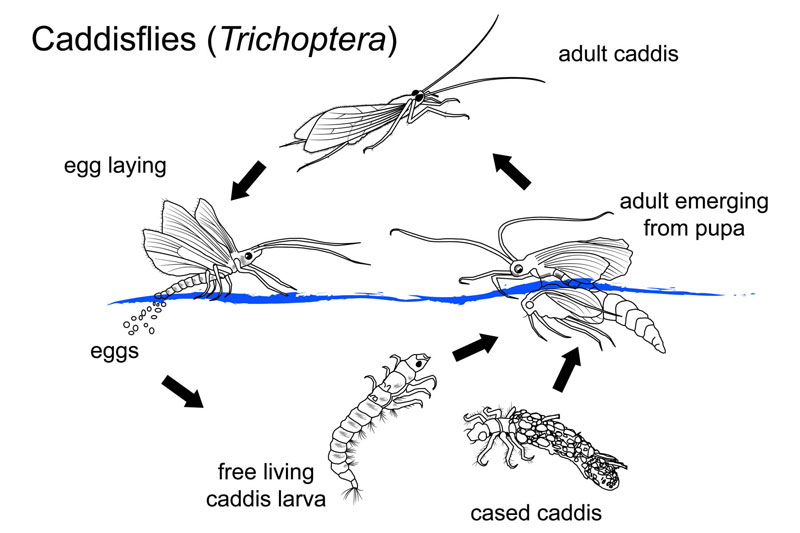
Caddisflies spend their short adult lives on land as flying insects, but their egg, larva, and pupa stages all occur underwater. The eggs are laid in freshwater rivers, streams, and lakes by the adult females and hatch a few weeks later. They spend the next year or so in their larval form underwater before becoming a pupa in a cocoon-like structure. When it is ready to transform into an adult, the pupa swims to the surface and crawls – or flies – out of the water. The adults only live for a few weeks with the sole purpose of mating, laying eggs, and starting the cycle over again.

Perhaps the most interesting caddisfly species is the case-making caddisfly that use their silk to glue together small rocks, leaves, twigs, and other materials to construct their own portable tube-like houses. The caddisfly builds the case around its body, leaving out its head and legs to freely crawl through the water to feed. The case serves as protection from predators and turbulent water, and they vary in appearance depending on the materials available to them. Each case is unique to the caddisfly that made it! Watch this video of how a caddisfly constructs its case: Sticky. Stretchy. Waterproof. The Amazing Underwater Tape of the Caddisfly
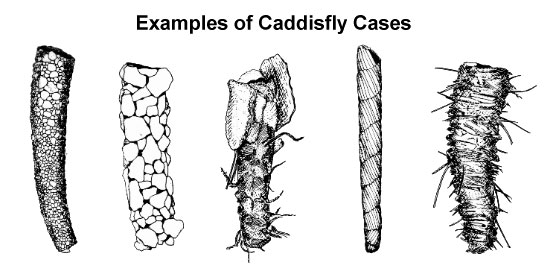
As if caddisflies could get any cooler than building their own houses, these architects of the insect world also provide many important services to the environment and to humans. While some people may find the swarms of adult caddisflies a nuisance, they only live for a few weeks, they don’t bite or sting, and they are an important food source for many fish species like trout. The larva help clean the water and recycle nutrients by feeding on biofilms and breaking down organic matter into smaller pieces for other organisms to consume. Finally, caddisflies are considered indicator species, meaning they are used by scientists to determine the health of a water body, similar to a canary in a coal mine. Caddisflies are very sensitive to pollution and require clean, highly oxygenated water to survive. When their populations are thriving, it is a good indication of a healthy watershed!
This June, as you encounter the Great Caddisfly Hatch, remember their presence is a good thing. It means our waters are not only healthy enough to support them, but also healthy enough to support us. These little macroinvertebrates provide food for fish, won’t bite or harm us, design and build their own houses, and let us know how clean our watershed is. What more could you ask for in a bug?
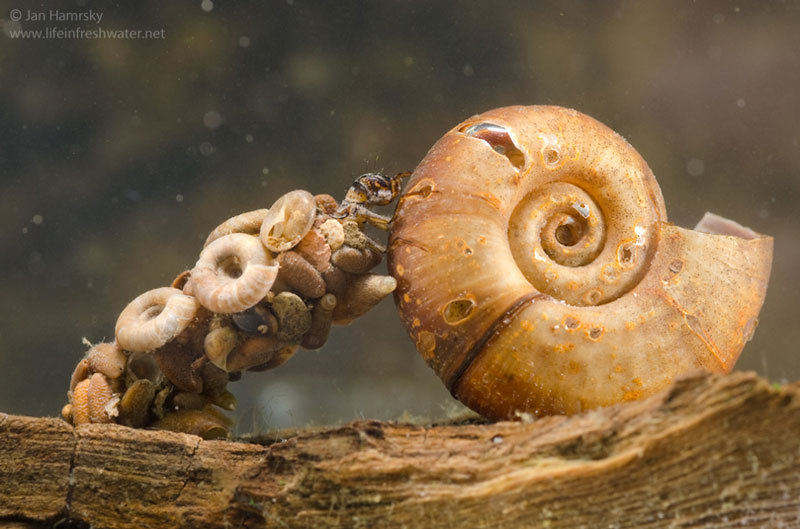
Resources
https://www.macroinvertebrates.org/taxa-info/trichoptera-larva
http://lifeinfreshwater.net/caddisfly-larvae-trichoptera
https://projects.ncsu.edu/cals/course/ent425/library/compendium/trichoptera.html
Alyssa has been a Friend of the St. Clair River board member since 2019 and serves as Secretary on the Board. She is an avid birder and is currently tackling the 52-Week Hike Challenge with her husband.

